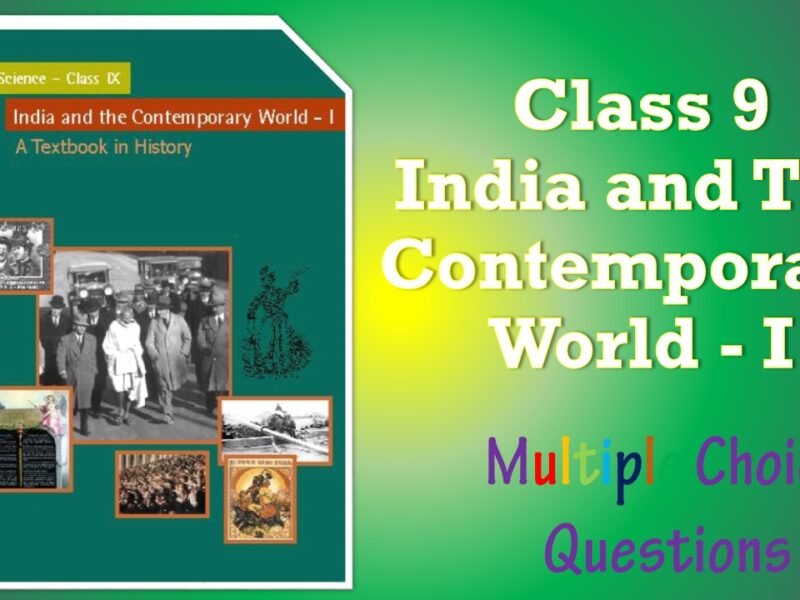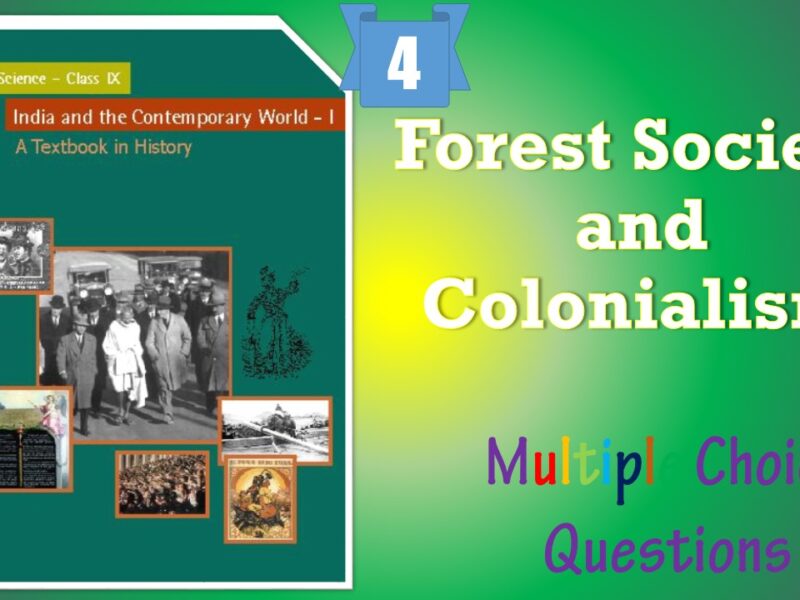CBSE Class 10 Social Science Chapter 3 Nationalism in India Multiple Choice Questions with Answers. MCQ Class 10 History Nationalism in India with Answers was Prepared Based on Latest Exam Pattern. Students can solve NCERT Class 10 History Nationalism in India MCQs with Answers to know their preparation level.
Students who are searching for NCERT MCQ Questions for Class 10 History Nationalism in India with Answers are compiled here to get good practice on all fundamentals. Know your preparation level on MCQ Questions for Class 10 Social Science with Answers. You can also verify your answers from our provided MCQ Class 10 History Nationalism in India with Answers. So, ace up your preparation with MCQ of Chapter 3 History Objective Questions.
MCQ Class 10 History Nationalism in India with Answers - Set - 3
Question 1:
Muhammad AliJinnah was willing to give up the demand for separate electorates:
(a) If Muslims were included in the Second Round Table Conference.
(b) If Muslims were assured reserved seats in the Central Assembly.
(c) If Muslims were assured reserved seats in the Central Assembly and representation in proportion to population in the Muslim-dominated provinces.
(d) None of the above.
Correct Answer – (C)
Question 2 :
Dr. B.R. Ambedkar, who organised the Dalits into the Depressed Classes Association:
(а) Clashed with Lord Irwin at the Second Round Table Confereru
(b Clashed with Jawaharlal Nehru at the First Round Table Conference
(c) Clashed with Mahatma Gandhi at the Second Round Table Conference
(d) None of the above
Correct Answer – (C)
Question 3 :
An important feature of the Civil Disobedience Movement was the:
(a) Large-scale participation of villagers.
(b) Large-scale participation of the people.
(c) Participation of the Indian merchants and industrialists.
(d) Large-scale participation of women.
Correct Answer – (D)
Question 4 :
When did Gandhiji travelled to Champaran in Bihar?
(a) 1916
(b) 1920
(c) 1925
(d)1918
Correct Answer – (A)
Question 5 :
Who was the author of the famous novel ‘Anandamath’?
(a) Bankim Chandra Chattopadhyay
(b) Abanindranath Tagore
(c) Natesa Sastri
(d) Rabindranath Tagore
Correct Answer – (A)
MCQ Class 10 History Nationalism in India with Answers
Question 6 :
Mahatma Gandhi called the ‘untouchables’:
(a) Messengers of God
(b) Local people
(c) Harijan
(d) None of the above
Correct Answer – (C)
Question 7 :
Mahatma Gandhi declared that Swaraj would not come for a hundred years if:
(a) Sati system was not abolished
(b) Women did not participate in the movement
(c) Untouchability was not eliminated
(d) None of the above
Correct Answer – (C)
Question 8 :
Which one of the following leaders headed Oudh Kisan Sabha?
(a) Jawahar Lal Nehru
(b) Mahatma Gandhi
(c) Subhash Chandra Bose
(d) Motilal Nehru
Correct Answer – (A)
Question 9 :
What was the reason behind clash between Gandhi Ji and Dr Ambedkar?
(a) Separate electorates would create division in the society.
(b) Separate electorates would slow down the progress of integration into society.
(c) With separate electorates, Dalit’s would gain respect in society.
(d) The condition of Dalit’s would become better.
Correct Answer – (A)
Question 10 :
The Non-Cooperation Movement was started by Mahatma Gandhi in support of which movement?
(a) Khilafat
(b) Swaraj
(c) Khilafat and Swaraj
(d) none of these
Correct Answer – (C)
- NCERT Solutions Class 10 History Chapter 1 : The Rise of Nationalism in Europe
- NCERT Solutions Class 10 History Chapter 2 : The Nationalist Movement in Indo-China
- NCERT Solutions Class 10 History Chapter 3 : Nationalism in India
- NCERT Solutions Class 10 History Chapter 4 : The Making of Global World
- NCERT Solutions Class 10 History Chapter 5 : The Age of Industrialisation
- NCERT Solutions Class 10 History Chapter 6 : Work, Life and Leisure
- NCERT Solutions Class 10 History Chapter 7 : Print Culture and the Modern World
- NCERT Solutions Class 10 History Chapter 8 : Novels, Society and History
- NCERT Solutions Class 10 Social Science India and the Contemporary World II Textbook



